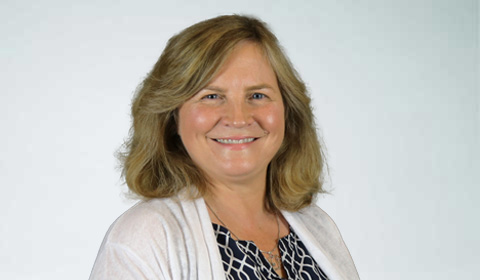All about workflows
DigitalOwl developed Workflows to simplify and customize the summarization of medical records. For example, Workflows instructing AI to seek out specific manual-based relevant information from medical records would allow underwriters to quickly pinpoint details such as, in the case of diabetes, the date of diagnosis or how long an applicant has taken a particular medication such as Metformin. Armed with these specifics, underwriters could then be directed to the appropriate risk class specific to RGA’s underwriting philosophy.
RGA then developed decision trees based on our Global Underwriting Manual (GUM). These guidelines draw on RGA’s wealth of medical underwriting expertise to add depth and specificity to DigitalOwl applications.
The process is all about finding the key details to make a sound risk decision. For example, for an applicant with a history of depression, Workflows will automatically query medication lists, treatment history and hospitalizations. Workflows will ask questions like "When was the person diagnosed with depression?” “Has the person been hospitalized in relation to depression?” “What medications does the person take for depression?" DigitalOwl’s proprietary technology then uses the responses to present an analysis of depression for the underwriter.
Fed the right workflows, DigitalOwl is able to present exactly what underwriters want to see: the relevant impairments organized with all the pertinent information to make an underwriting decision.
- Matt Darrington, Executive Director, Underwriting Innovation, for RGA Strategic Underwriting Initiatives (SUI)
For an applicant with a history of cancer, Workflows can zero in on pathology report findings, types and lengths of treatments, recurrences of the disease, imaging reports, and relevant lab findings – information that, when collectively assessed, may help improve underwriting outcomes.
The answers to the Workflows questions also include a source page. By clicking on these linked source pages, the underwriter is directed to the section of the medical record where AI is pulling those details from. This helps the underwriter validate the information and quickly direct them to the pertinent pages to be reviewed.
Training opportunities with Workflows
Workflows can also empower new underwriters and familiarize them with the details of an underwriting manual. With strong workflows in place, new underwriters do not have to know everything to ask about a given medical impairment. Workflows help underwriters gather each piece of information and give them the final output, plus the questions asked to ensure nothing is missed. Seeing the extracted information on specific impairments and how that information was derived can provide key learnings for newer underwriters and give them a holistic perspective of the case.
Severity models
Underwriters can classify individuals in various ways to assess risk, but the process is often complex.
Previously, underwriters might comb through thousands of pages of medical records for information needed to classify an individual. These records could arrive out of order, forcing an underwriter to sift through each page to decipher important insights from multiple office visits. Moreso, those records could contain a one-off mention of a significant medical event or lifestyle factor that may be missed by an underwriter confronted with such a massive amount of paperwork.
To combat these challenges, RGA underwriting teams have developed and tested comprehensive severity models to integrate with DigitalOwl’s Workflows. These models use underwriting manuals to apply different levels of risk to various severities of a particular condition – for example, mild, moderate, and severe. By using innovative AI modeling methods that define the relevant characteristics of a particular severity classification, digital underwriting tools like DigitalOwl can execute complex severity models which fit underwriting manuals like GUM.
For example, a mild version of depression could include the use of a low dose antidepressant with minimal or no symptoms. A moderate version could include multiple psychiatric medications or missed time off work due to worsening symptoms. And if an applicant has a history of recent suicide attempts or inpatient hospitalizations, they would be classified as severe.
RGA and DigitalOwl continue to develop new severity models and expect to expand them to cover pertinent medical conditions such as asthma, sleep apnea, psychiatric ailments, cancers, diabetes, and other co-morbid conditions.
Future enhancements
AI-powered underwriting tools such as DigitalOwl will continue to improve as new information becomes available.
One major avenue for improvement is to integrate data sources from other vendors, such as prescription databases, exams and insurance labs, claims data, and insurance applications. These new data streams paint a clearer picture of an individual’s risk and can fill gaps in the medical record. They can also provide more up-to-date information about treatment.
The result will be a more comprehensive view of a person’s entire medical history without the need for an underwriter to piece together disparate data sources to determine a risk rating.
That same comprehensive view could also help on the back end with audits (post-issue accelerated monitoring and internal QA) and claims processing. Claims professionals can use Workflows to obtain relevant information to determine an insured’s cause of death. The ability to click on source pages and directly access medical records is also immensely helpful when processing claims.
Conclusion
By integrating AI-powered tools like DigitalOwl’s solutions, underwriters can automatically transform unstructured data into structured, actionable insights that enhance decision-making processes. These tools facilitate more precise risk evaluations and offer targeted training opportunities for new underwriters. RGA continues to evolve DigitalOwl’s capabilities, incorporating broader data sources for even greater accuracy. The transformative potential of AI-enhanced workflows is creating a new paradigm for risk assessment and management.
To learn more about how RGA and DigitalOwl are pioneering AI-enhanced underwriting workflows that drive efficiency and better risk decisions, contact us.







